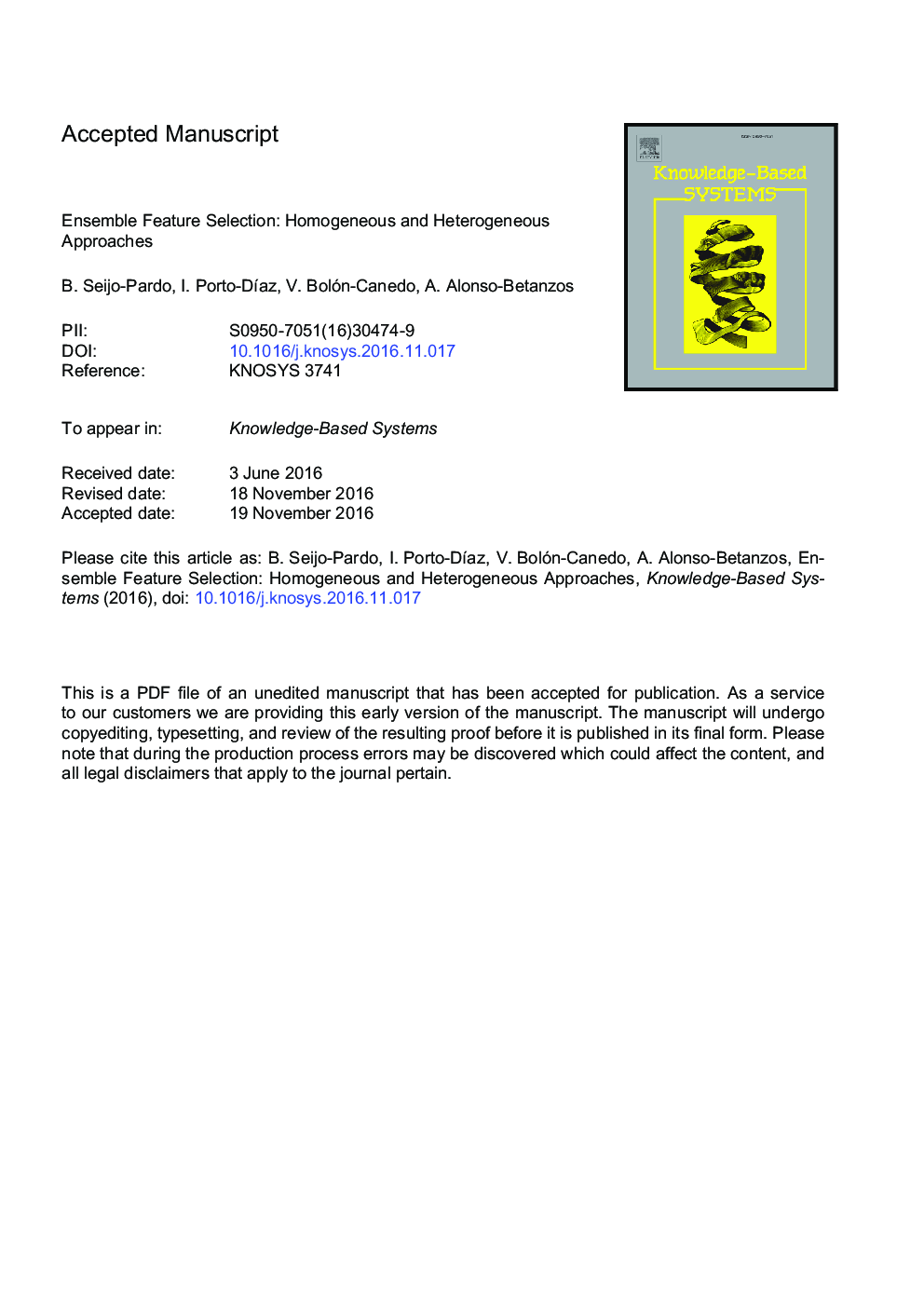| Article ID | Journal | Published Year | Pages | File Type |
|---|---|---|---|---|
| 4946382 | Knowledge-Based Systems | 2017 | 35 Pages |
Abstract
In the last decade, ensemble learning has become a prolific discipline in pattern recognition, based on the assumption that the combination of the output of several models obtains better results than the output of any individual model. On the basis that the same principle can be applied to feature selection, we describe two approaches: (i) homogeneous, i.e., using the same feature selection method with different training data and distributing the dataset over several nodes; and (ii) heterogeneous, i.e., using different feature selection methods with the same training data. Both approaches are based on combining rankings of features that contain all the ordered features. The results of the base selectors are combined using different combination methods, also called aggregators, and a practical subset is selected according to several different threshold values (traditional values based on fixed percentages, and more novel automatic methods based on data complexity measures). In testing using a Support Vector Machine as a classifier, ensemble results for seven datasets demonstrate performance that is at least comparable and often better than the performance of individual feature selection methods.
Related Topics
Physical Sciences and Engineering
Computer Science
Artificial Intelligence
Authors
B. Seijo-Pardo, I. Porto-DÃaz, V. Bolón-Canedo, A. Alonso-Betanzos,
